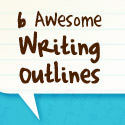I’m sick of thrillers screaming at me.
As I walk through the Mystery/Thriller section of a bookstore, I feel my chest tighten with anxiety. My eyes are assailed by the PERMA!CAPSLOCK, high-contrast colors and striking imagery that adorns each cover.
But, perhaps that’s the point.
Mystery/Thriller authors WANT you to feel anxiety, tension — perhaps even fear. And that’s before you read even one word.
How would this change for a romance novel?
What about a memoir?
How about YOUR book?
As far as readers are concerned, their first exposure to your book’s message is through its (hopefully) appropriate and effective cover.
Just like exquisite writing, great design makes the viewer FEEL. Does yours stack up?
Let’s do a quick exercise to find out.
Does your book cover have feelings?
You don’t have to do this exercise with your book cover. In fact, you can choose any book cover to get the hang of how it works. Personally, I do something similar to this before and during my cover design process — it forces me to stay focused on the goal of the cover.

Photo: BookPage
- Choose your book cover. For this excercise, I’ve chosen The Girl With The Dragon Tattoo. Not because it’s trendy, but because it happens to be sitting atop Amazon’s bestseller list at the moment.
- Examine it. Don’t worry about the spine or back cover at this juncture — just take a few moments to really study each component of the front cover. What does the font look like? What colors are used? What images stand out? Are any words emphasized (via size, color or form)?
- The first thing I notice here is the neon yellow cover (random geeky note: the eye actually ‘sees’ yellow before any other color). Yellow is generally thought of as a happy color, but the high-contrast black, distressed, all-caps, scattered text makes me think more of police tape or a warning sign. The light green tattoo pattern in the background, along with the slight red drawn flames around the edge serve to further focus my eye on the high-contrast text.
- Write down the first five feelings that come to mind. Remember, we’re not looking for words that describe the cover itself, we’re looking for words that describe YOUR personal feelings. Since you guys are all great writers, I’m sure you have no trouble thinking of five, but check out this List of Feeling Wordsif you’re like me and need some help coming up with descriptive words.
- Anxious, fearful, cold, worked up and drawn toward.
- Check out the results. Were they what you were expecting? Do they accurately reflect what you want your reader to feel when looking at your cover? If not, perhaps it’s time to go back to the drawing board (if your book is still in the production phase) or take away some lessons for your next work.
For even better results, have a friend, family member, reader or even a stranger do this exercise. The more input you receive, the better!
Resources
The affect that design has on feelings is a particularly interesting one to me — for more information, check out these resources:
- See Color Theory in Action <– overview of the feeling and meanings associated with the colors.
- Display Typography <– check out how type size/weight is used in the ‘Wanted’ poster.
- Excellent Book Covers and Paperbacks <– examples of cover design excellence. Strive to be among them!
Next Steps
Was the exercise a success? Did you learn anything about your cover’s perception? Does cover design make YOU feel? Let us know in the comments!

 We're
We're 








